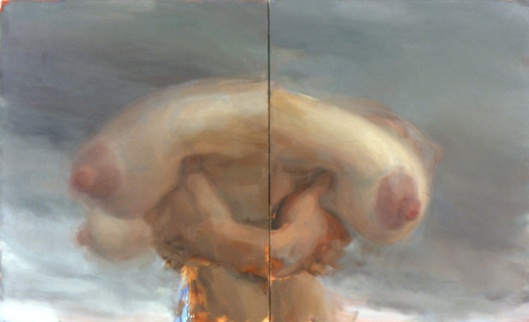[i wrote this in 2010, but it keeps coming up so i’m reposting it now…]
When I came upon the Facebook splash page for the first time, about a year ago, I was immediately struck by how much the friend icons dotting the mercator projection resemble latex baby bottle nipples.
I mentioned this to my friend Akiva, remarking that I’ve been hesitant to comment on this on Facebook, and he said yes, to point it out would be tantamount to “kicking someone in the Oedipus complex”
He went on to say that Facebook is the perfect source of secondary narcissistic supply, and that the “primary goal of everybody’s narcissism is to secure and maintain the stability of the source of narcissistic supply that they’re getting from someone else.”

Everyone needs some assurance, and for 410 million people, Facebook offers easy affirmation in the form of the “like” button. Let’s not forget that Facebook, the precursor of which, “Facemash” was conceived, as is now well known, when Facebook’s founder, Mark Zuckerberg [note : when i wrote this in 2010 I had to look up his name] “was blogging about a girl who had dumped him and trying to think of something to do to get her off his mind.” This guy is stinging from a breakup and he builds a little treefort Like world.
I’m all for the supportive backchannel.
But what becomes of the “user” when they start to lean in for the Like?
The frisson of unconditional positive regard when someone likes your link, your lunch, your call to action, your photo of yourself at 5. SOOOO Cuuuuute!!!!!!
The little red numbers on the globe mount.
X likes your status.
X likes your link.
X likes your activity.
The warm dopamine bath of seeing one’s self mirrored in others.
It’s not intrinsically problematic to find assurance in our relation to others, of course. In their book Politeness, Penelope Brown and Stephen Levinson describe how people manage their “face,” in interactions with others. “Positive face” refers to the sense of affiliation we feel when, for example, our best friend uses the same intonational patterns as we do. The term describes every member’s wish to be seen & held as part of the fold by others.
The problem, Akiva says, is that “Facebook is really setting up the world to be just one big source of unconditional positive regard for a self that you’re projecting out and having mirrored back to you, ” adding that the propping up crosses into confusion about what is the false self, virtual or augmented that’s being projected.
The average Facebook member spends seven hours a month on Facebook [note in 2014: who even knows what this figure is now. I’m not going to google it. i’m terrified to know]. This might not all amount to reassurance behavior, “clamping down on ‘the good breast'” [Akiva again] anytime because it’s available.”
Of course, people do all sorts of things on Facebook.
You know, keeping up with events! Getting the word out, changing the world, all that.
And maybe the uncanny resemblance is totally coincidental.
Still it seems intriguing that when Facebook graphic designers tackled the visual problem of creating an icon to represent “friends,” they landed squarely on this shape and the nearly exact color of the disposable nipple. It’s difficult to make sense of this icon without reading it in relation to these. It’s a pretty strange image otherwise.
So at least there is a sort of twisted honesty in this icon. Facebook is making it clear that the nipple the “user” gets is the latex stand-in.
I can appreciate that they’re not even pretending to offer a human nipple.
Hanneline Røgeberg, Bouquet, 2005, oil on canvas 3 x 2 1/2 feet x 2
********




